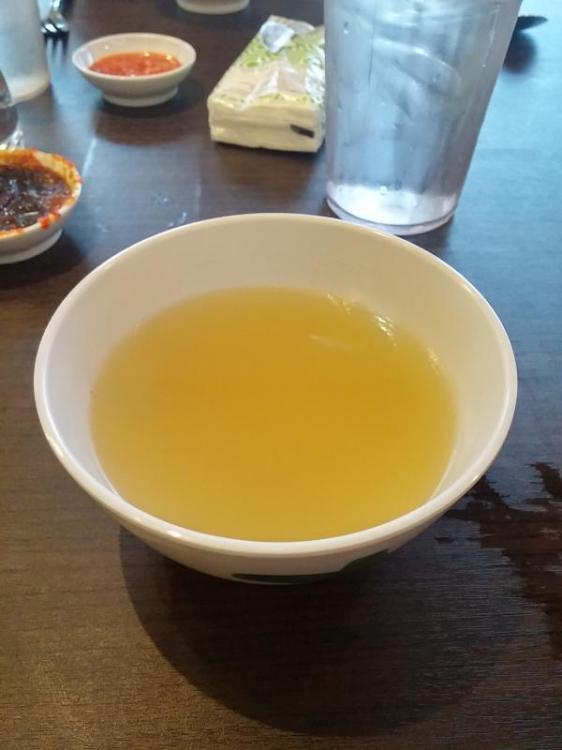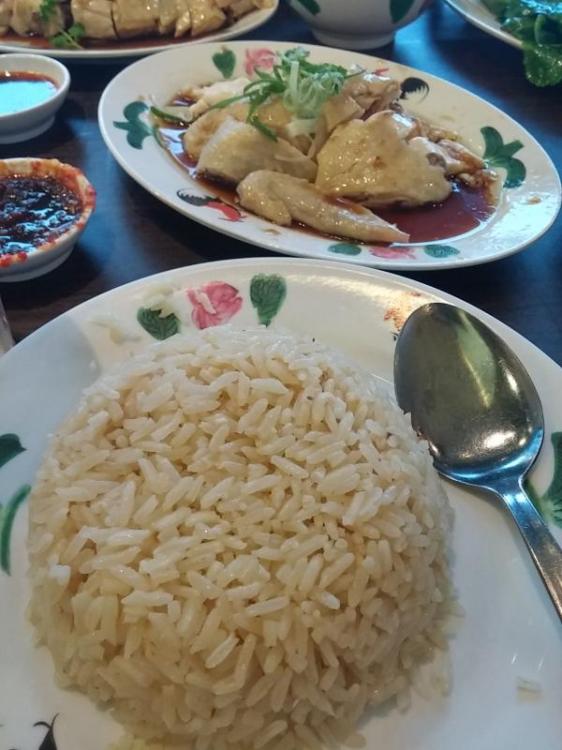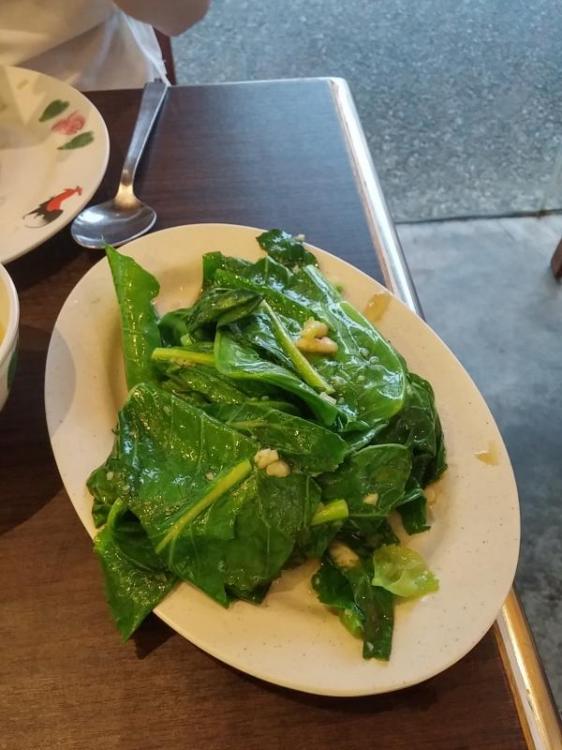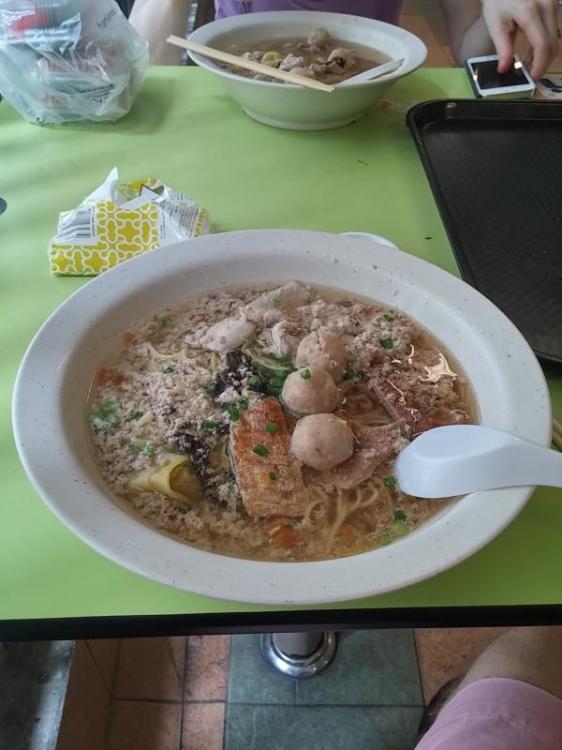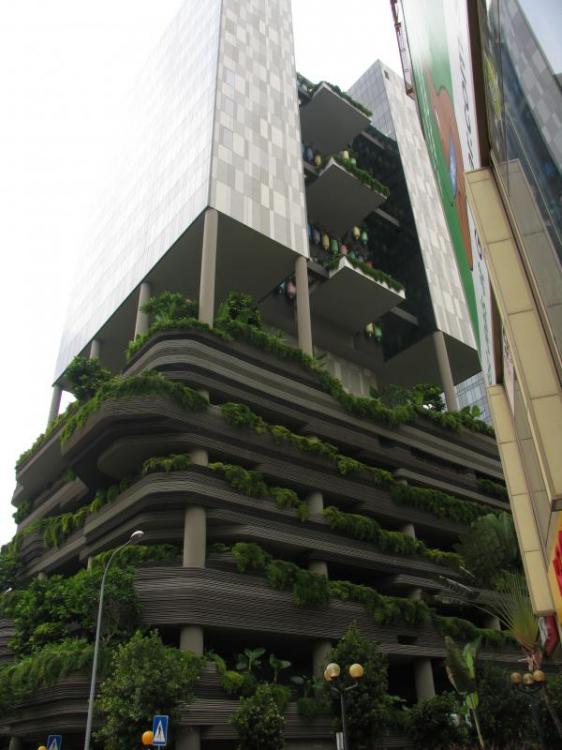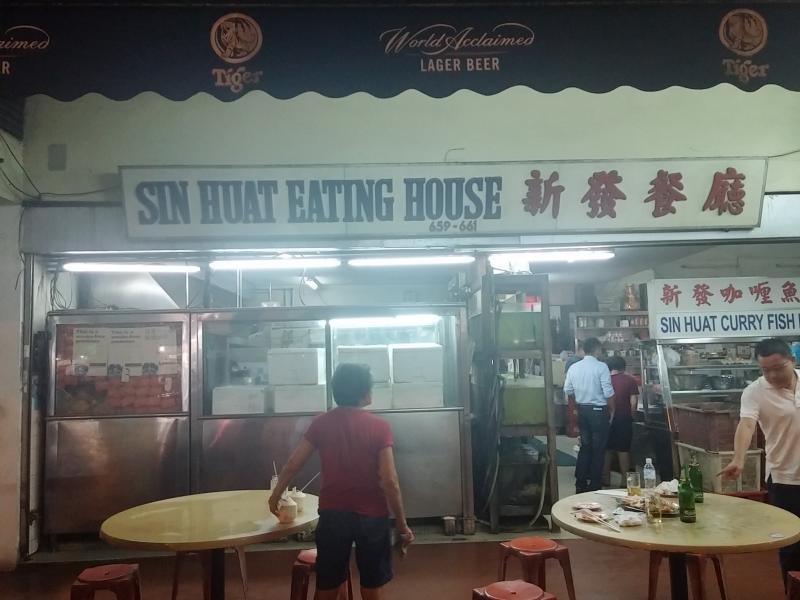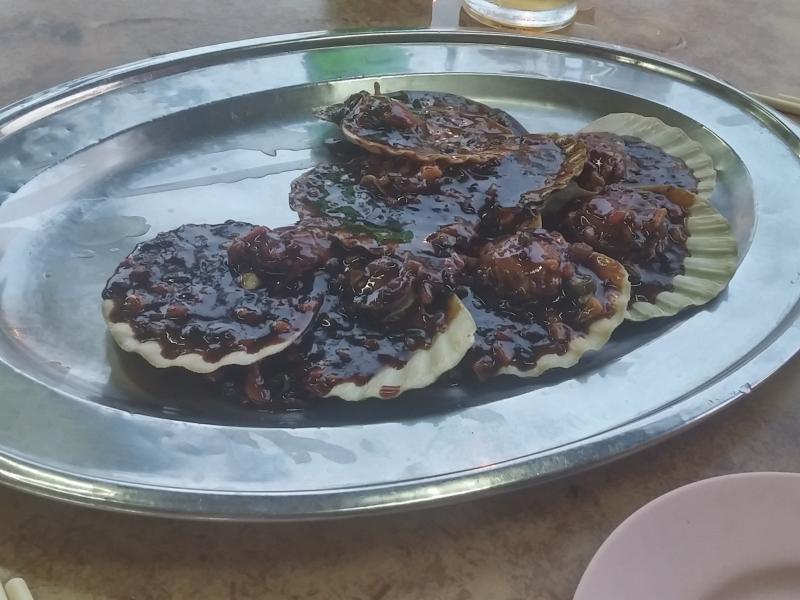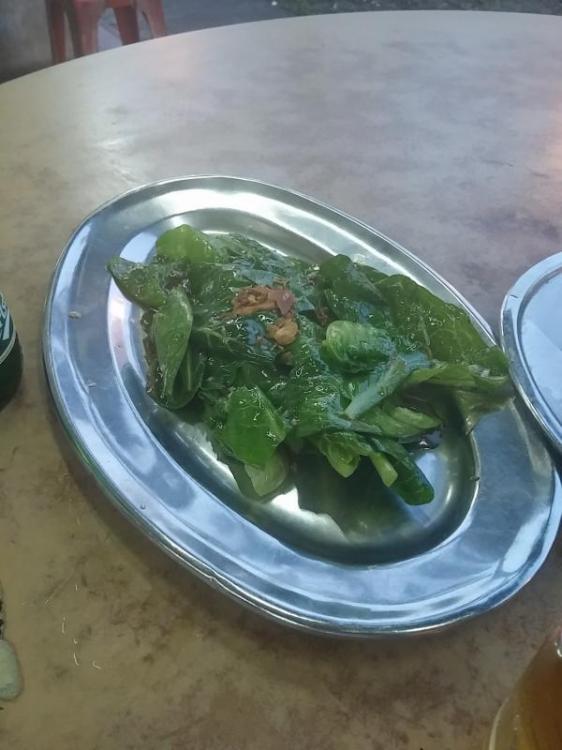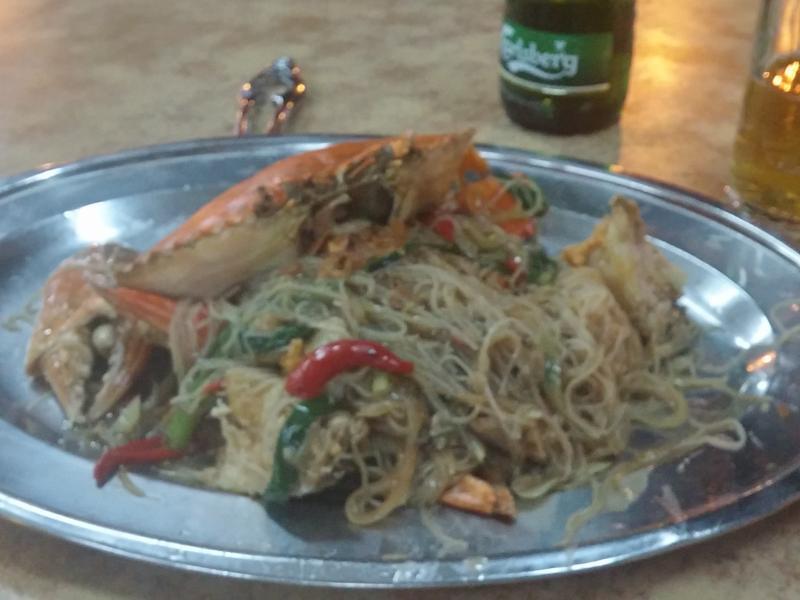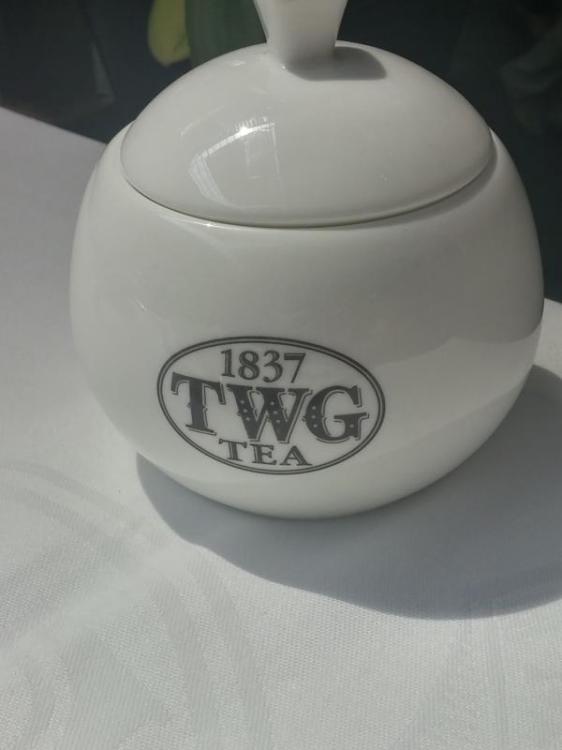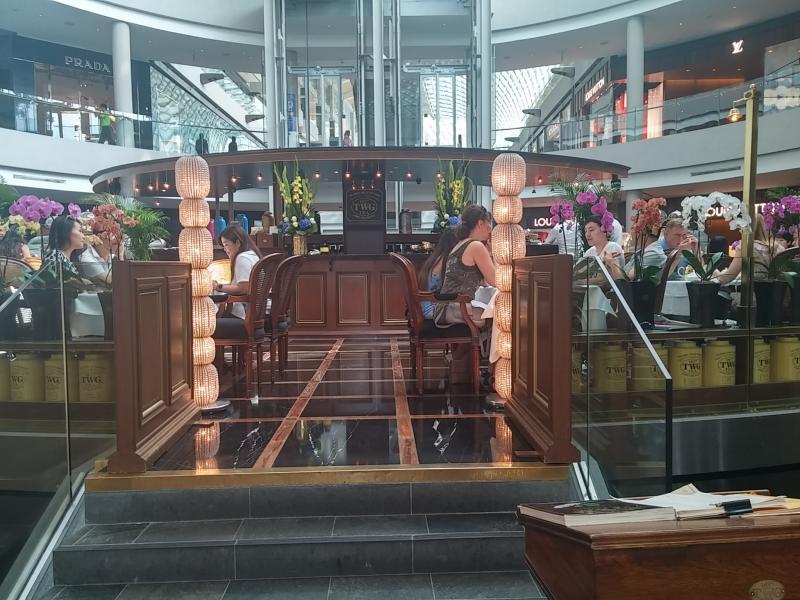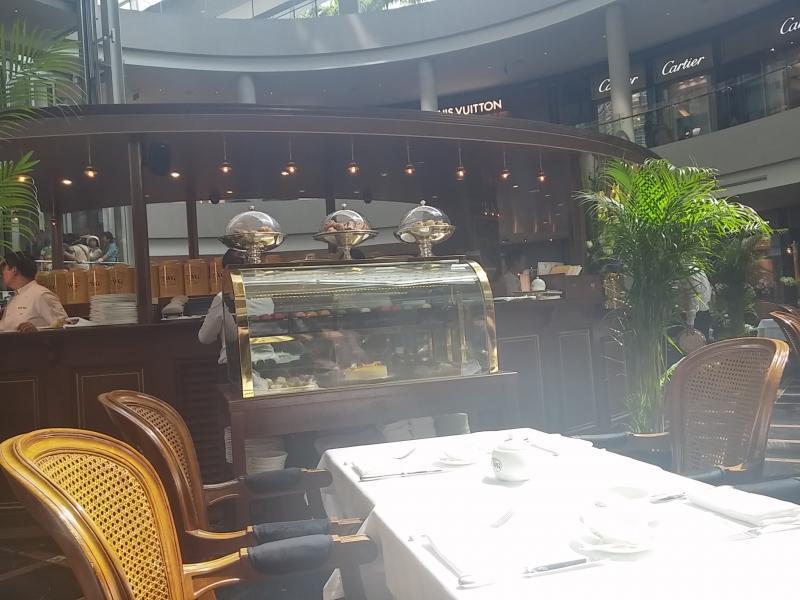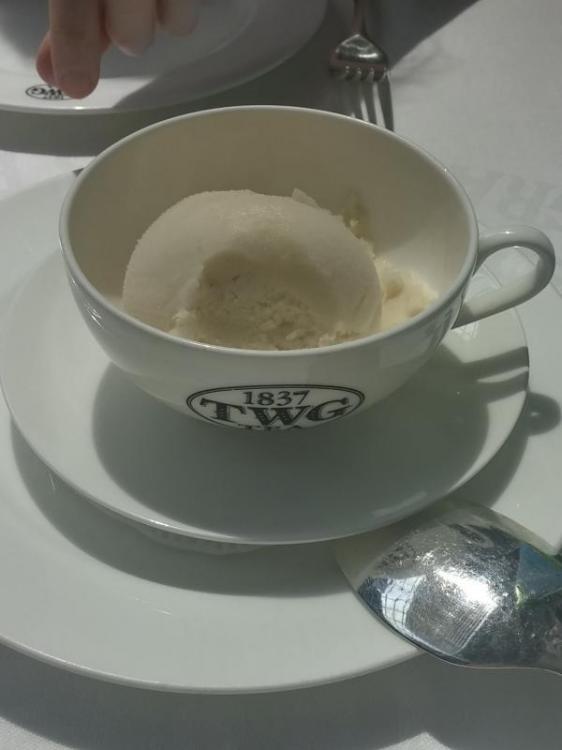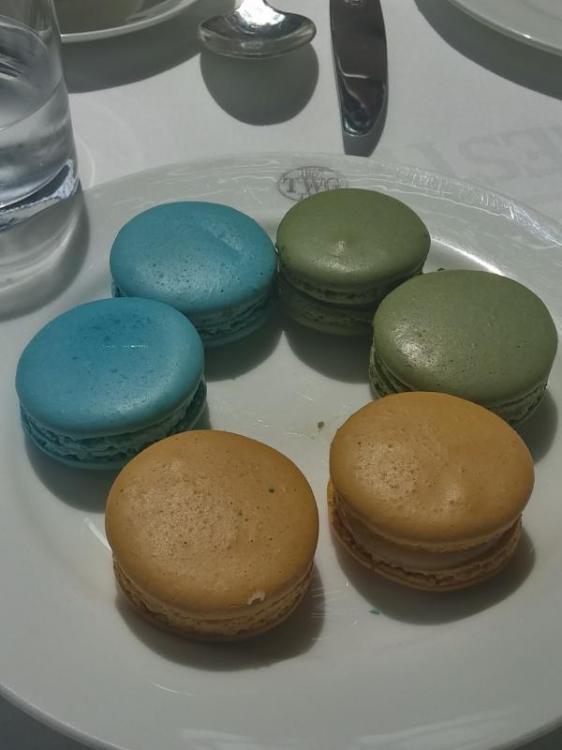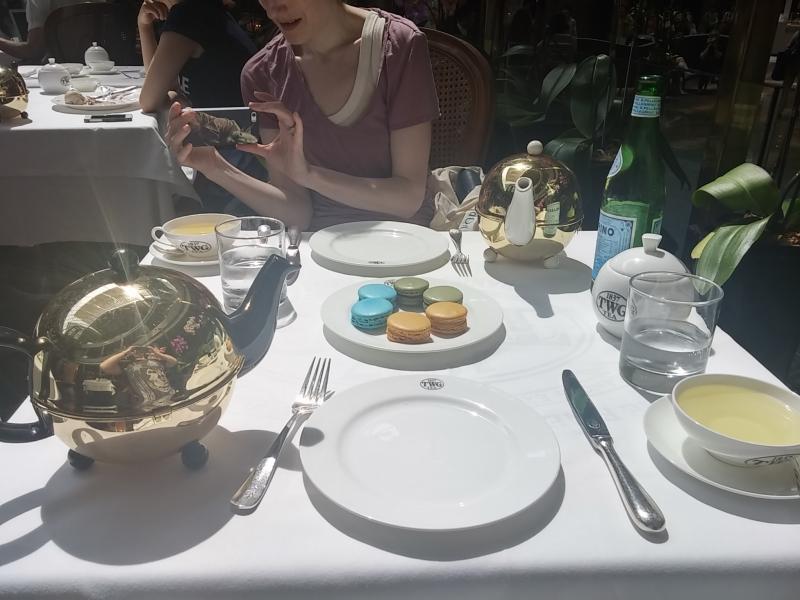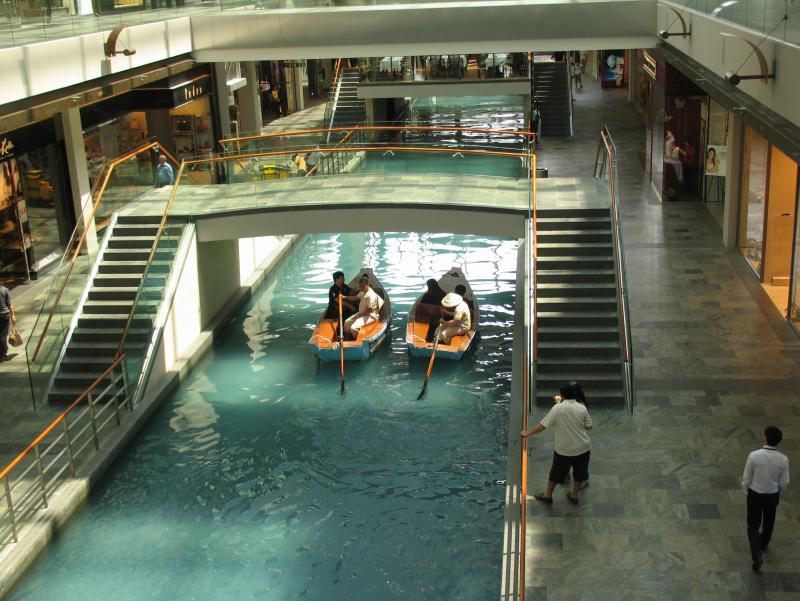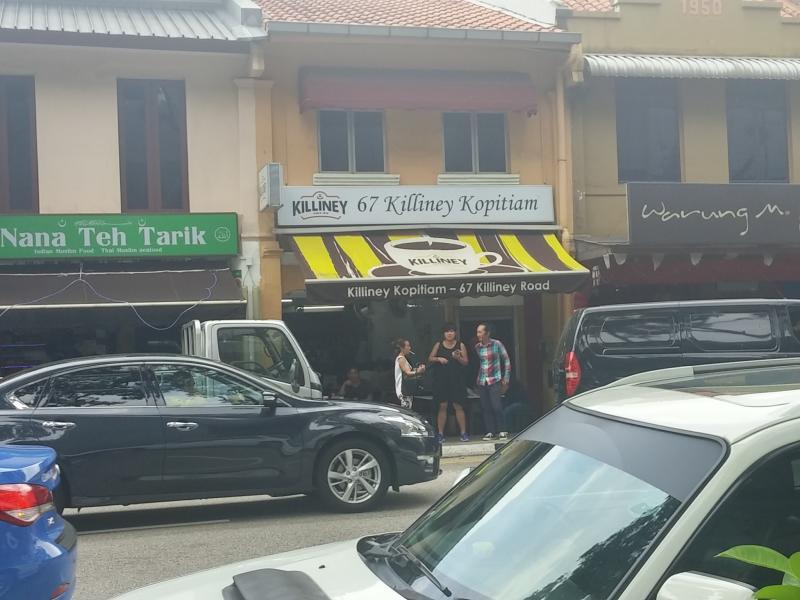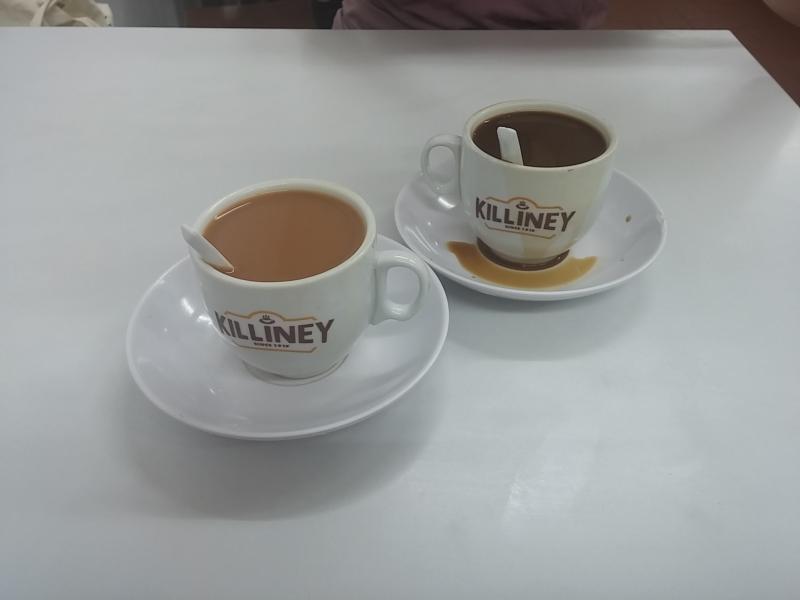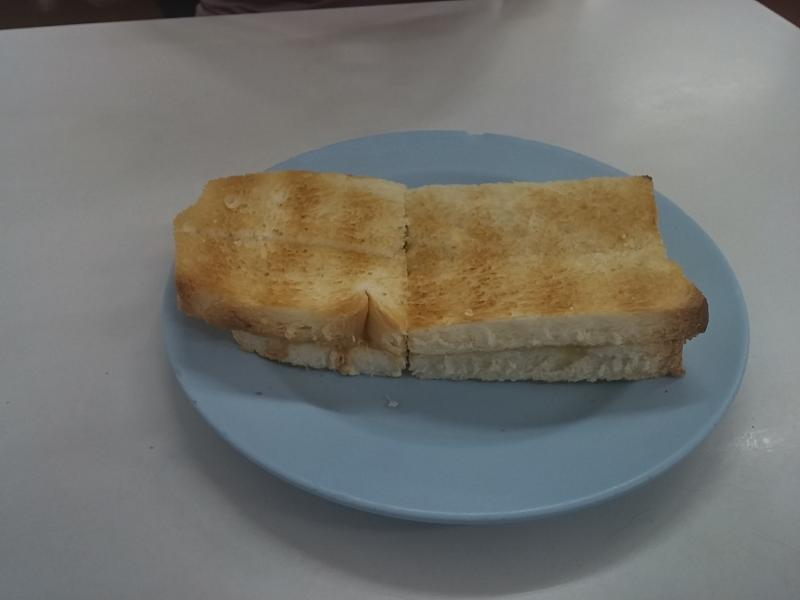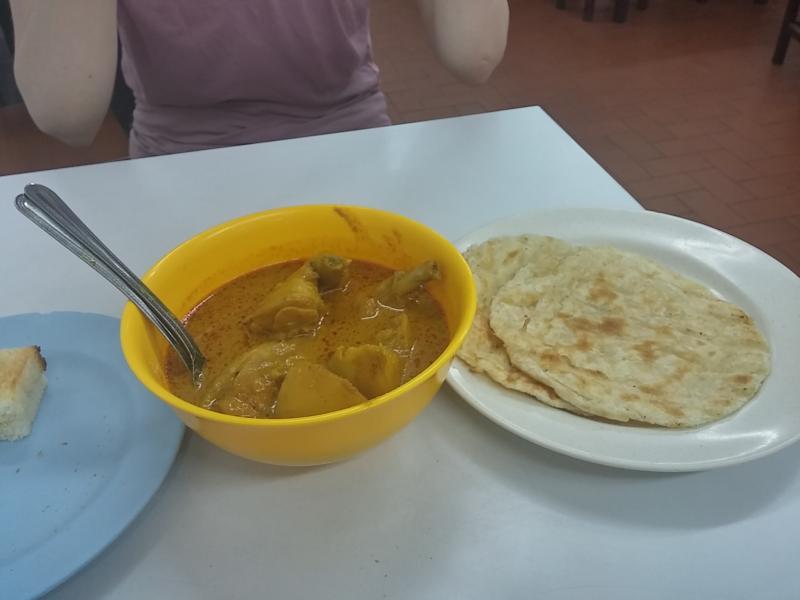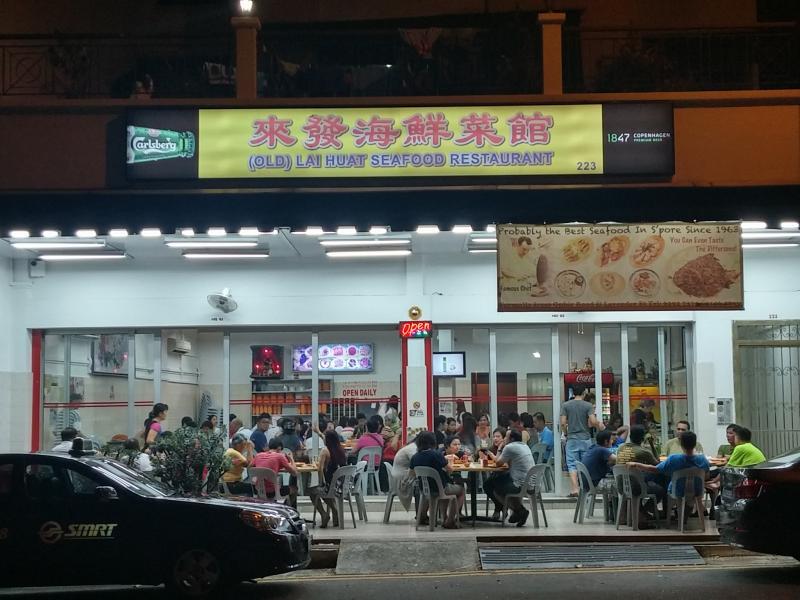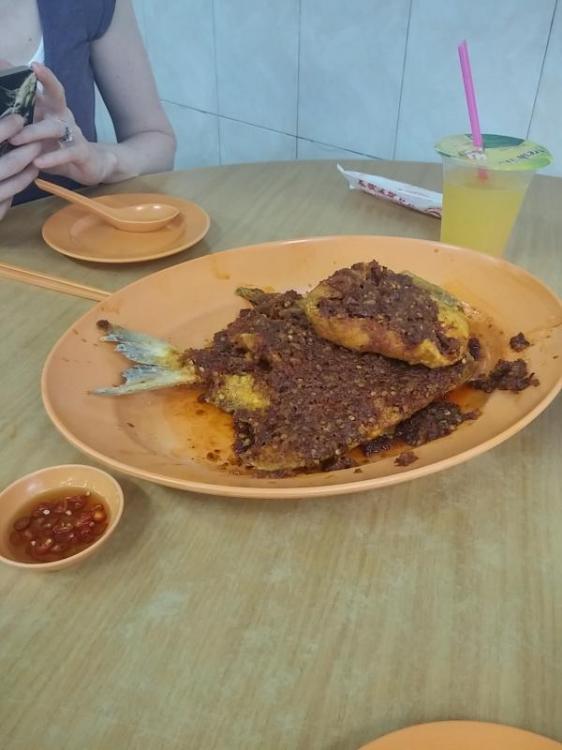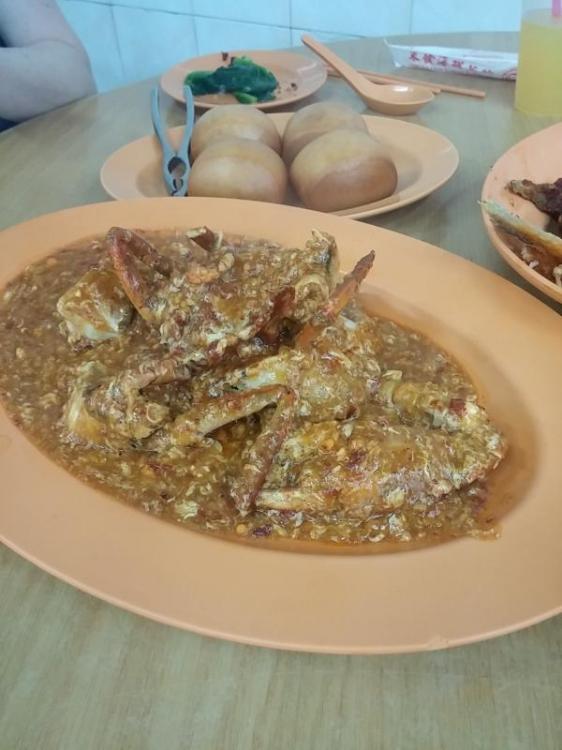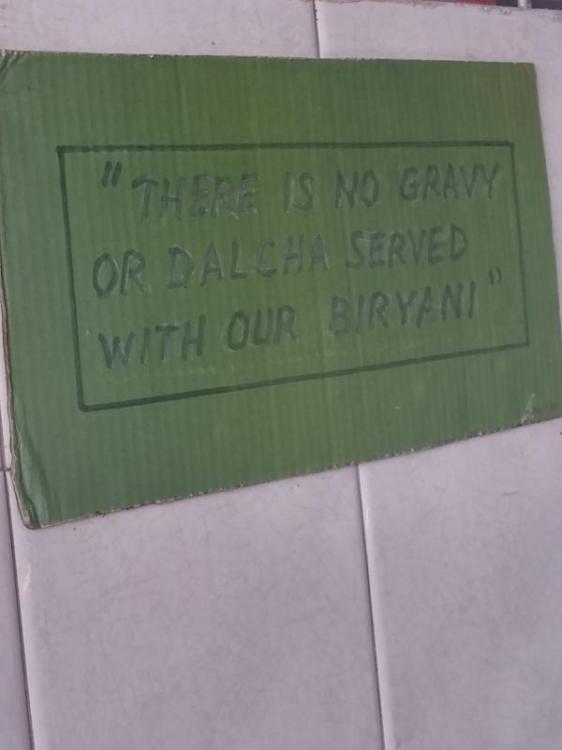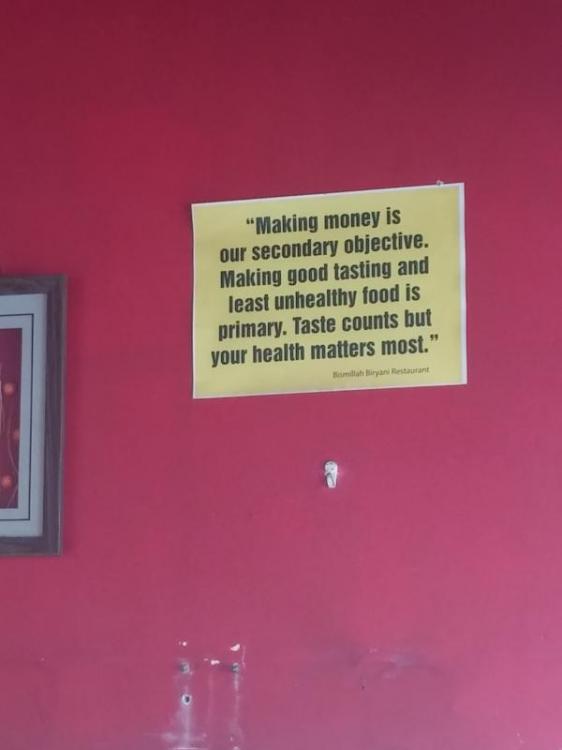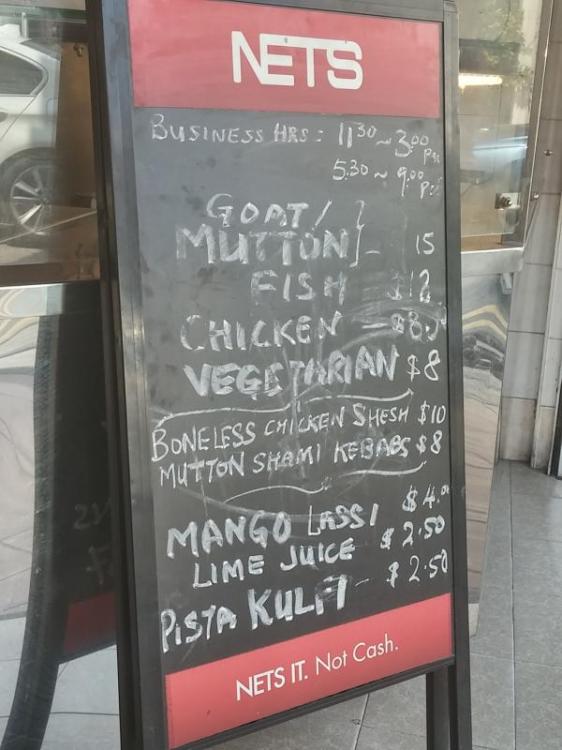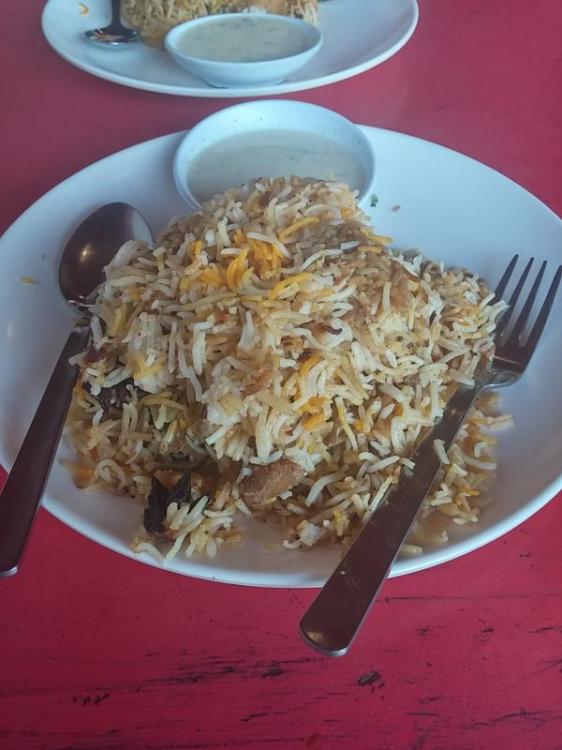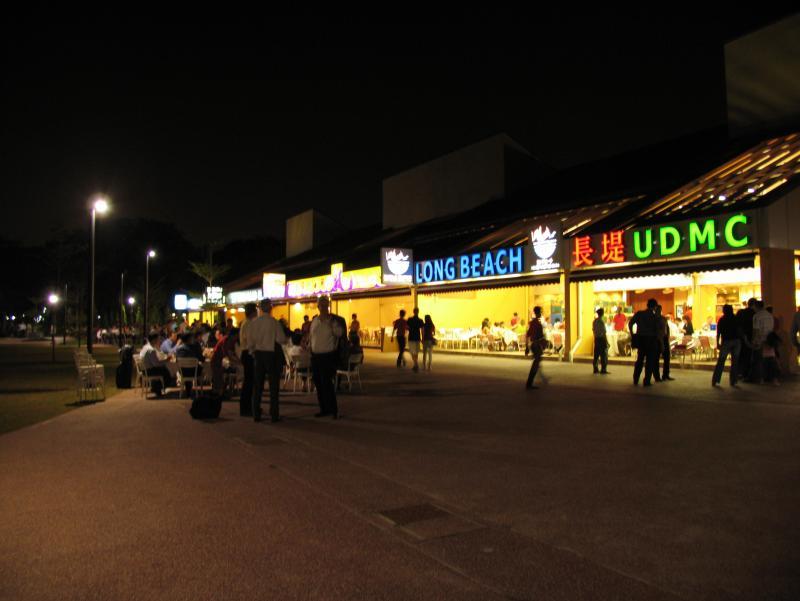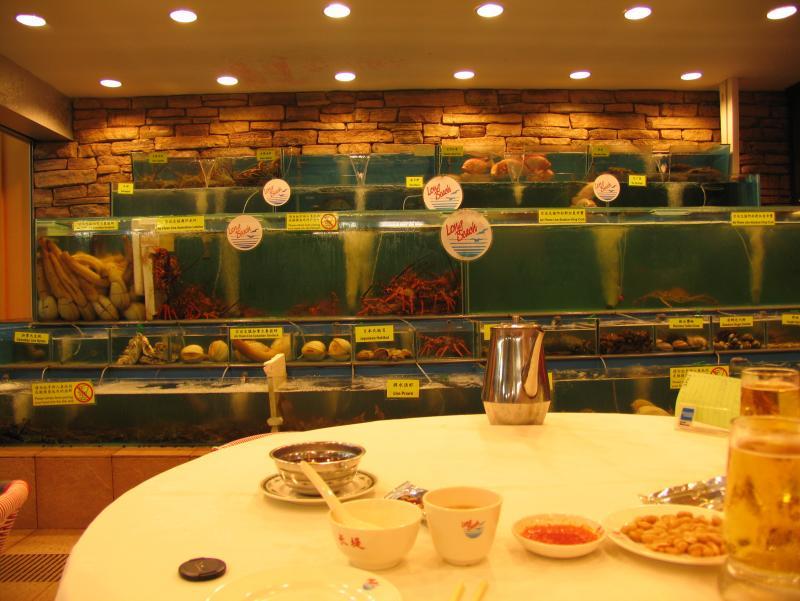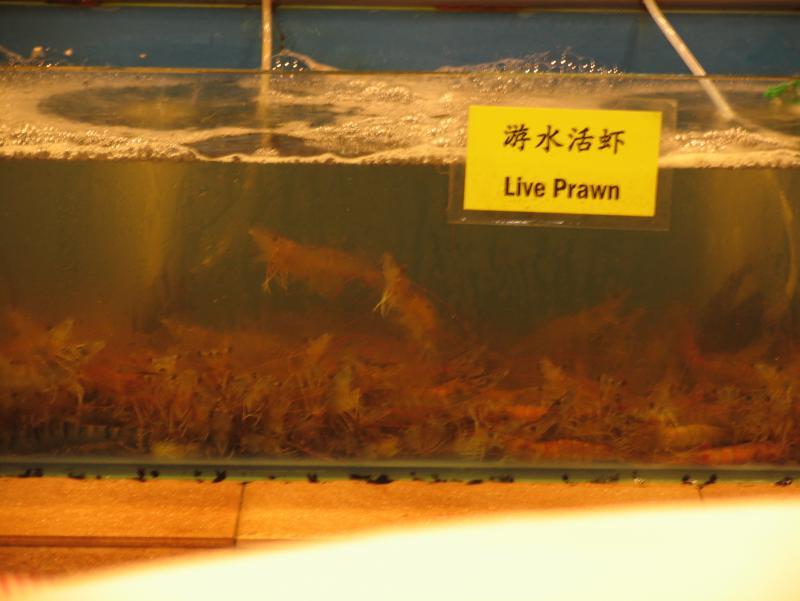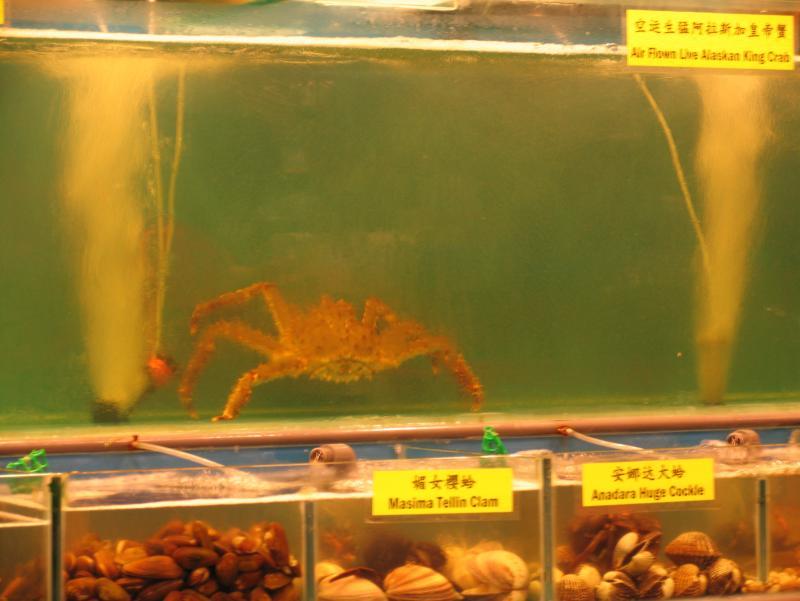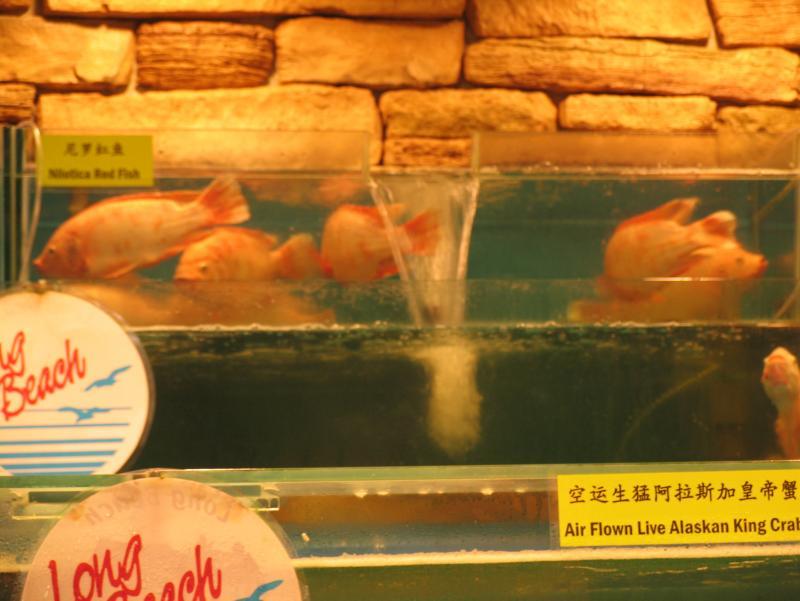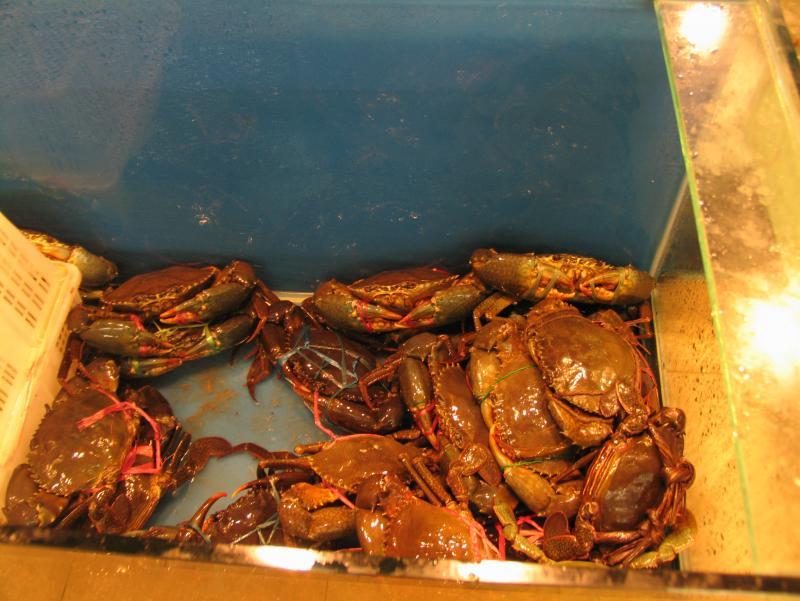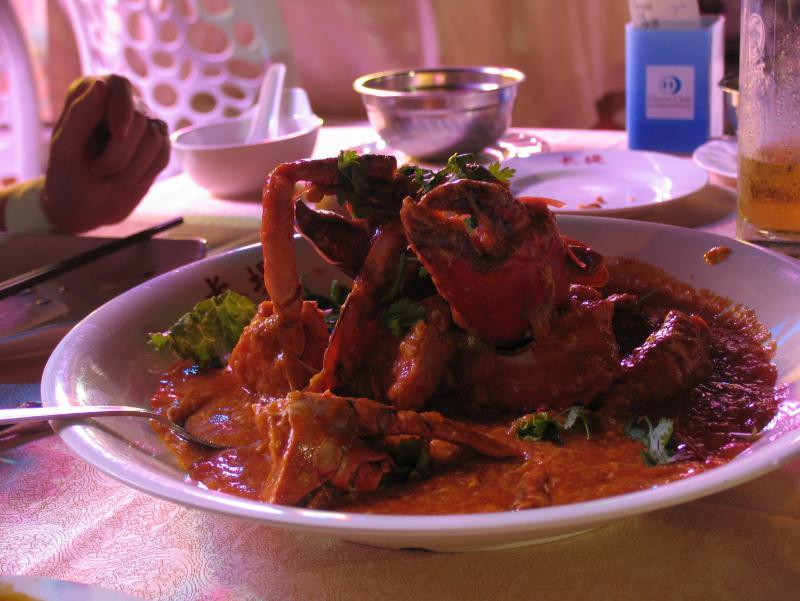
KennethT
participating member-
Posts
6,853 -
Joined
-
Last visited
Content Type
Profiles
Forums
Store
Help Articles
Everything posted by KennethT
-
Singapore and brief excursion to Thailand food blog
KennethT replied to a topic in Elsewhere in Asia/Pacific: Dining
Exactly. There are many attractions that charge more for tourists than residents, such as Gardens by the Bay, Night Safari, etc... but, this is clearly and fully disclosed on the big sign displaying the prices. I was under the impression that Smithy was asking about more nefarious or covert over-charging of tourists - which does not happen in S'pore (there are many gov't fines for getting caught doing so), but is widely done in Thailand. Many prices there are not fixed - other than restaurants and hotels, most prices in Thailand are subject to 'negotiation'... but you just know that as a tourist you won't be able to negotiate as far as a local would. -
Singapore and brief excursion to Thailand food blog
KennethT replied to a topic in Elsewhere in Asia/Pacific: Dining
Not at all. Prices in Singapore are fixed, as far as I could tell. Prices are displayed on signs out front in English, or, like at Wee Nam Kee, on the menu. Not only that, but it seemed like many people didn't really know we were tourists. Many people asked how long we had been living there and were surprised when we told them we were tourists and (unfortunately) only there for a week. I think the figure was 3% of the population was 'other', many of which are western expats (mostly Australian), so it's not entirely unlikely that we could have been residents - especially given the places we went to which do not see very many tourists. One thing that happens (but they do this to everyone, so I'm told by our S'porean friend) is that some restaurants put out a dish of peanuts and 'wet naps'.. you don't realize they charge for them until you get the bill... not that they charge much - SGD0.40 or something like that. One comment on your Egypt experience. I don't know about there, but many countries have a culture of bargaining. Prices are just not fixed. Thailand is this way - it is basically expected that you are to haggle for most things, other than restaurants. If you're a tourist, you just have to come to grips with the idea that you won't be able to negotiate down like a local would. So maybe you can get 15% off, not 30%... all in all, usually things are still pretty good deals. -
Singapore and brief excursion to Thailand food blog
KennethT replied to a topic in Elsewhere in Asia/Pacific: Dining
Dinner was at our favorite Hainanese Chicken Rice place - Wee Nam Kee. We had been there 3 years ago, back when they were in a storefront restaurant - but the area they were in was closed and torn down, so they moved to the United Sqare Mall (very close to the Novena MRT)... Now, it's even better because it's air conditiioned!!! Usually we'd reserve chicken rice for lunch, but we needed to have an early dinner since we had to wake up ridiculously early to check out and get to the airport to make our 8AM flight to Koh Samui, Thailand, so we wanted to go somewhere close by and that wouldn't have a long line. One of the things I like so much about WNK is their chili sauce. It has a great chili flavor, but doesn't blow your head off. Plus, there is a big jar of it on every table. Right next to the jar of chili sauce, is a big jar of grated ginger so you can add however much you like, and a squeeze bottle with sweet soy sauce... When you order their chicken rice (SGD4.60 btw), they first serve their extremely chicken-y consomme: Then, the main event comes: Stir fried baby kailan: And, we tried it since it was on their menu, stir fried lettuce: It tastes exactly as it sounds.... Next stop, Thailand!!!!! -
Singapore and brief excursion to Thailand food blog
KennethT replied to a topic in Elsewhere in Asia/Pacific: Dining
So, for lunch the next day, we were going to go to the Hill Street Tai Hua Pork Noodle shop, which is a little bit outside the center of the city, near the Lavender MRT station. This place supposedly has the best Bak Chor Mee in Singapore... we were there 3 years ago, and it was awesome - but we had nothing to compare it to... but, as a measure of quality, the line to get it was over an hour long! Meanwhile, the stalls next to it had no lines at all. So, since the last time was so good, we were all set to go out there and wait in line again... but they were closed!!!! I had even checked online beforehand which days they were closed, and specifically went on other days... there was a handwritten sign in the window, but it was written in Chinese, so I had no idea what it said... and I was so disappointed, I didn't think to take a picture of it. So, what to do when the best laid plans go haywire? Well, first I went on the internet looking for other well known Bak Chor Mee places, but nothing really came up except for articles talking about Hill St... But I remembered there was a Bak Chor Mee stall in the Hong Lim Centre - not far from the Outram Park Char Kway Teow stall.... so back there we went... You can see the minced pork, the springy meatballs, wontons, etc., but really, I thought it was a poor facsimile to my memory of the Hill St. version. Yes, memory (especially after 3 years) is not very accurate, but I do remember that the Hill St. one was definitely worth waiting for on such a long line, and I told myself then that if we were ever back in S'pore that we had to go again... I would not go back for this version, and I didn't have to wait in line at all. Then again, maybe it was my fault. When I ordered, the lady asked if I wanted the noodles dry or in soup. I couldnt' for the life of me remember how the HIll St. version was, so I ordered it in soup... I wonder how different the flavors would be dry. In hindsight, since it's so cheap, I really should have gone back and ordered another one dry, just to see the difference.... oh well, a good excuse for another trip! -
Singapore and brief excursion to Thailand food blog
KennethT replied to a topic in Elsewhere in Asia/Pacific: Dining
There are tons of rooftop gardens, plantings, etc... check out: according to this: https://www.skyrisegreenery.com/index.php - the gov't funds up to 50% of the cost of installation of green roofs in an effort to get more buildings to participate. Here is a photo of one of my favorite buildings (from the ground) - it's right near the Hong Lim Food Centre: Regarding the bread - I haven't actually began a search yet - last weekend, I cheated and put kaya and butter on an english muffin... terrible, I know, but I had no bread in the house at all, so I guess it was better than nothing.... I imagine any fresh, relatively closed crumb, soft white bread would work - just make sure it's sliced thickly... I think the toasting would be the most difficult part - rotuts, I think the CSB would be up to the task..... ETA link ETAA I actually remember this building being built when I was there 3 years ago! The construction made it a bit difficult to findthe Hong Lim Center at the time.... -
Singapore and brief excursion to Thailand food blog
KennethT replied to a topic in Elsewhere in Asia/Pacific: Dining
huiray, thanks for the extra detail... fantastic! I can't say that I had many different versions of kaya, but the Killiney's version is a brownish/yellowish/faint greenish color and is pretty thick. I didn't take a picture of the inside, but the 'pat' of butter was about 3/16" thick (maybe 4mm?) and was definitely cold. We saw most people having their bread toast with the soft-boiled eggs, as you mention, but we enjoyed it without it. Killiney's also made a french toast where they dipped their bread slices in egg mixture (I don't know if they just used beated egg or a true custard), then grilled, and served with butter and kaya on the side so you can add as much as you'd like. We didn't get to try that option either. -
Singapore and brief excursion to Thailand food blog
KennethT replied to a topic in Elsewhere in Asia/Pacific: Dining
Killiney's has jarred ones to take home as well... we actually did get a jar, and when they learned that we were not local, they wrapped it with foam and taped it up for us. Edit: spelling -
Singapore and brief excursion to Thailand food blog
KennethT replied to a topic in Elsewhere in Asia/Pacific: Dining
Sorry I didn't get to post anything last night - work wound up later than expected, and I was feeling a bit under the weather, so I wanted to go to bed early to try to knock it out before I actually came down with something.... There should be another installment tonight... -
Singapore and brief excursion to Thailand food blog
KennethT replied to a topic in Elsewhere in Asia/Pacific: Dining
Dinner was here: This is a seafood 'cze char' made famous by Singaporean food authority KF Seetoh, and St. Bourdain. The seafood they get here is ridiculously fresh. This restaurant made a name for itself by having great relationships with local fishermen, a slightly ornery chef/owner, and a crab dish - but that comes later.... This is scallops in an oyster sauce based sauce. I'm not usually a huge fan of scallops, but these were excellent. Chef Danny said they're so good because he gets them live and keeps them that way until ordered. They were sweet and briny and just perfectly cooked. Prawns with garlic. Not much to say... great flavor, perfectly cooked, and came with a nice chili sauce for dipping. Obligatory stir-fried baby kailan. Very similar to the others - which is to say very tasty. And, the star of the show, the crab bee hoon: This is a large Sri Lankan crab, perfectly cooked. The bee hoon (thin rice noodles) are cooked in crab stock, and has mixed in some chilis, green onion, and of course crab row, for good measure. This dish is awesome...Also in the top 5... Huge chunks of crab meat, for very little effort... great sauce and noodles that are like essence of crab. -
Singapore and brief excursion to Thailand food blog
KennethT replied to a topic in Elsewhere in Asia/Pacific: Dining
Tea break!!! This is one of the TWG tea restaurants in the Marina Bay Sands mall at the bottom of the Marina Bay Sands hotel. This is a pretty upscale mall, as evidenced by this shot of the entrance to the tea place - just take a look at some of the surrounding stores! Here's another shot showing the display case of some of the desserts: As a snack we got: Green tea sorbet infused with ginger Selection of macaron. Matcha; lemon bush tea; vanilla bourbon tea & kaya We also had two different teas - one was Secret Needles: (from their menu) From the prestigious region of Simao, this marvellous TWG green tea boasts leaves with delicate white tips which yield a full-bodied infusion, a sweet distinctive flavour, a fresh aroma and a rich and nutty aftertaste. and Imperial TiKuanYin: (from their menu) Produced on rolling, verdant slopes, this exceptional quality TWG harvest is the perfect finale to a meal, producing a well-balanced cup with a lingering fragrance of fresh, dewy flower blossoms. Here is a shot of the bounty: and yes, that is Yoda on my wife's cell phone case... she IS that cool.... This 'snack' was quite expensive - probably more than the cost of several meals combined... but the service was excellent, as was the refined atmosphere, albeit inside the mall... and the teas were exceptional - so much so that we had to get some of each to bring home. The sorbet was awesome as well with an intense ginger flavor. The macarons were ok - the flavors were very good, but not as crisp and light as they could have been... hard to ask for that so close to the equator though, so under the circumstances, very good. But this is not just any mall.... it also has this on the ground floor: How many malls can you think of that have gondola rides? -
Singapore and brief excursion to Thailand food blog
KennethT replied to a topic in Elsewhere in Asia/Pacific: Dining
OK, breakfast the next day was here: This is the original location of Killiney's Kopitiam. They are now a chain across S'pore, but all of the reviews I read say that the original is still the best and most consistent. Conveniently, it was about a 20 minute walk from our hotel (or a 5 minute ride on their wonderful MRT (subway) system). We wound up going there every morning after for the rest of the trip - that's how much we enjoyed it! They are known for a few things: On the right is kopi (like coffee). It is basically extremely strong and bitter coffee mixed with sweetened condensed milk. It is everywhere in S'pore, and much of the rest of SE Asia. I, unfortunately, don't drink coffee as I feel like my heart is going to beat through my chest shortly afterwards... but I love the smell... and I can tolerate small amounts - like as a flavoring in a dessert, or a sip of regular coffee.... for me, on the left, I got teh (tea). It's basically an extremely strong black tea mixed with sweetened condensed milk. This is another item they are known for: bread toast. Yes, I think the name is redundant... but it is delicious. You can't tell from the photo (sorry, I didn't shoot the inside), but it is a sandwich made from fluffy white bread that has been toasted over charcoal. Inside each quarter is a pat of butter and a smear of kaya, which is an egg custard made with coconut jam. It is sweet, and slightly eggy, and with the butter and charcoal toasted bread, fantastic. And filling. And cheap. Like maybe SGD1 (I think, I don't remember exactly but I remember it was cheap). Last but not least, we would have: Curry chicken with roti prata. Just like it sounds - it is an Indian curry with chunks of chicken and potato. They typically serve it with french bread for dunking, but they also offer it with roti prata, which personally, given the choice, I'll take the prata!! Roti prata is a fried laminated bread that is crispy on the outside, and a little chewy and flaky on the inside. It is made by stretching the dough on an oiled surface until it is paper thin, then rolled into a snake and then coiled into a disk. The disk is then typically fried on a flat-top to order, but I think Killiney's actually grills theirs over the charcoal as well. Most of the other prata we had on this trip were significantly greasier on the outside. This dish could have been my absolute favorite dish of the trip.... it's hard to say for sure because there are so many great ones, but this is definitely in the top 5 if not the top 3. And cheap... like SGD3-4 or something like that (I think they charged an extra 0.50 for the prata). -
What about the Malaysian Roti Canai, and similarly Singaporeah Roti Prata - stretched breads....
-
Singapore and brief excursion to Thailand food blog
KennethT replied to a topic in Elsewhere in Asia/Pacific: Dining
Beebs, do you remember the names of the stalls you particularly enjoyed? As of this last trip, S'pore has quickly become one of my favorite places on Earth. I love how it is a modern, metropolitan city, dropped into a beautiful tropical garden. I love how clean, orderly and safe it is without compromising ethnic diversity or personality. But, I am concerned for the future... most of the younger generation are highly educated, and do not want to follow in running shophouse restaurants or hawker stalls. I can't say I blame them, either. It is hard work - 6-7 days/week, with long, hard, hot days on your feet. And it definitely doesn't pay nearly as well as finance or other industries where the younger people are trending to... I mean, how much income can a person make selling food for $3 a plate? So, according to locals, it is getting harder and harder to find the really good food that is not made in a central kitchen and reheated onsite, or part of a chain with 30 locations. I hope they're able to find a middle ground somewhere. -
Well, I say, if it ain't broke..... I don't know how long Canadians have been dealing with milk in bags, but no one seems to complain... and it certainly reduces the cost of packaging! Plus, it's created a whole new industry of companies making pitchers to put the bags in for pouring. As they say... sleeping dogs...
-
I assumed there was a spigot of some kind, like in the boxed wine.
-
I've never seen that before! How do you keep it from being punctured, or spilling, or store in the refrigerator?
-
Is that a bag at the bottom of the photo - the one that says 4 liters, 1%... is that a bag of milk?
-
Singapore and brief excursion to Thailand food blog
KennethT replied to a topic in Elsewhere in Asia/Pacific: Dining
Nowadays, absolutely. In terms of health and sanitation, S'pore is just like the west... unlike countries like Thailand, Vietnam, Cambodia, etc. which still have many diseases contaminating the water supply, you can actually drink the tap water in S'pore, and all food services have access to electricity (for refrigeration) and plumbing. They also have a government health inspection system similar to what is in NYC, and a letter based grading system. Many years ago, this was not the case (my friend was living/working there 30 years ago, got terrible food poisoning and had to be airlifted to Hong Kong) - but times have changed dramatically. Back then, the food sellers were in carts on the street with no electricity or refrigeration (like many places in the aforementioned countries, currently). I don't know when (help, someone?) but the government created the hawker centers which are now everywhere and forced all food sellers 'indoors' so to speak. S'pore's drinking water is on par with any city in the west. In fact, I routinely get a little stomach issues when travelling in Europe and drink the water, but had no issues on all 3 of the times I've been in S'pore. I don't go out of my way to drink the tap water, but I don't avoid it like the plague either (like I would in other countries). They have actually gone to great lengths to purify their drinking water - most of it comes from rainwater catchments, but some of it is from desalinated sea water, and highly purified reclaimed water - called NEWater... check out this website for more info: http://www.pub.gov.sg/water/Pages/singaporewaterstory.aspx -
Singapore and brief excursion to Thailand food blog
KennethT replied to a topic in Elsewhere in Asia/Pacific: Dining
I know I just covered this in my last post, but I want to reply to everything... I don't know if I'd called kailan 'readily' available... I'd say it is available, but you must seek it out. In most of Manhattan, I can't think of one supermarket, small market, or bodega that carries it, outside of chinatown, where it is indeed readily available and on every corner. Broccoli is readily available here. It is in every store. So is lettuce. And zucchini. And corn, even when not in season. Cucumber... ok, sorry to beat a dead horse... my rant is over. Also, I would like to clarify that what is available here is the standard thick stemmed kailan (which I also enjoy) but is different from the 'baby kailan' that I found ubiquitous in S'pore. I would consider that to be completely unavailable here. Kang kong in any form, aka morning glory, has limited availability, and I enjoy it when I can. The belachan kang kong is even more rarely available. I'm sorry if I wasn't clear before - I have no issue with ketchup. It is a fine condiment. My opinion is that Heinz makes the best (and if you will) definitive version. But, I think it adds a sweetness that I don't care for very much in chili crab. I'd rather taste chilis, and a hint of tomato, rather than having ketchup crab with a hint of chilis. Just my $0.02... please feel free to disagree. -
Singapore and brief excursion to Thailand food blog
KennethT replied to a topic in Elsewhere in Asia/Pacific: Dining
I'm sorry I wasn't specific enough... What I meant to say is that I usually do not like non-Asian style vegetables when in the US or elsewhere. It's not the preparations I don't enjoy (well, sometimes it is if they're overcooked), but I don't know why I've just never enjoyed western broccoli, cauliflower, eggplant, or many other vegetables that others hold dear. I don't know why I don't care so much for them. And, it's not that I won't eat them, I just don't seek them out like I would a good chinese stir-fry. The other problem is not necessarily of availability, but I can't think of any restaurant in NYC (maybe I'm not going to the right places) that will serve a plate of stir fried kailan for less than $12. The issue is that the restaurants consider stir-fried greens to be a main course, and price it accordingly. There may be a couple of restaurants in Chinatown that price and size an order of kailan as a side dish, but unfortunately, I can't make it down there as often as I'd wish. The last problem is that of availability. It's not that you can't find a nice stir-fried greens dish here - it's just that it's not readily available outside of select restaurants or areas like Chinatown. In my neighborhood, I can only think of one restaurant that actually has kailan (it's a thai place), but for some reason, they have an issue with washing it, so it is routinely sandy and gritty... yet I order it anyway... ho hum... And yes, I can make it myself at home - but the issue is availability (again). I cannot think of one store (supermarket, bodega or other) within 20 minutes walking distance that carries it. I'd have to go down to (you guessed it) Chinatown for a regular supply. There have been times I have actually considered moving to Chinatown to be in closer proximity to such things, but the idea of being constantly surrounded by tons of tourists, and crammed elbow to elbow with people is not very appealing. So, I get it while I'm down there on occasion, but it can't be a regular thing. -
This looks awesome... please, somebody!!!!
-
Singapore and brief excursion to Thailand food blog
KennethT replied to a topic in Elsewhere in Asia/Pacific: Dining
Next dinner was here: This place is completely off the tourist radar - most taxi drivers didn't even know where it was! This place was recommended to me a few years ago by an eGullet member who lives in Singapore. He said he used to go to this restaurant all the time, and I can see why. They are known for this dish: This is sambal pomfret. A pomfret is coated in their heavenly sambal paste, which is a combination of fermented shrimp paste, chili, and who knows what else, and is then fried. The result is shrimpy, slightly spicy and ridiculously addictive. We also had this: This is how chili crab should be. Their sauce is much deeper and aromatic compared with the sauces of the big name restaurants... by comparison, the big name ones taste like ketchup (which I actually think may be an ingredient in their sauces). Also pictured are fried mantou buns, which are great for sopping up the sauce. Not pictured is a plate of baby kailan, stir fried with garlic. I love this vegetable. Kailan (or gailan) is the chinese name for what we'd call here Chinese Broccoli, although I personally think it has nothing to do with regular broccoli. In most of the versions here, it is actually the stems you eat, and only a little bit of the leaves - the stems actually resemble asparagus (in appearance, not flavor or texture). This is also the standard type of kailan that you'd see in Hong Kong. But in Singapore, the "baby kailan" is the one that is ubiquitous. I don't know if it is really just a young version of the other type, or if it's a different strain. This version is very leafy, with thin stems that are tender, but a little crunchy. I love this vegetable... I could eat it every day... one of these days, when I get more time, I have to set up my leafy windowsill garden again and start growing it so I can have a never ending supply. -
Singapore and brief excursion to Thailand food blog
KennethT replied to a topic in Elsewhere in Asia/Pacific: Dining
No, only the chicken version came with the egg... but the goat version had a LOT of goat meat hiding under that mound of rice... I don't know what the cut was, but it was very juicy and gelatinous, and there were a few knuckle-like bones here and there. Yes, biryani is typically served with raita, which is a yogurt based condiment with cucumber and shallot. Although it doesn't look it, the goat biryani only seemed slightly spicy, but the heat builds over time. The raita is good because it is cooling. Most times I see basmati made, the raw rice is first soaked for a fewminutes, then rinsed many times until the water is clear. It is then typically quickly 'fried' in oil or ghee - just for a moment so that each grain is coated in oil. The liquid is then added, covered, and cooked as normal. Anna, is this how you do it? -
Singapore and brief excursion to Thailand food blog
KennethT replied to a topic in Elsewhere in Asia/Pacific: Dining
Back to the present day.... The next day, we went for lunch to Little India to the place with supposedly the best Biryani in Singapore: Biryani is a rice dish, where rice, meat and spices are layered in a pot, sealed and then cooked (supposedly) over charcoal so the spices perfume the rice and meat. This is the way it had been done for a long time, until some restaurants started taking shortcuts - cooking the rice and meat separately, and then combining later. So, as a way to distinguish themselves, the restaurants who did it the traditional way started calling it "dum biryani" - although really, the phrase is redundant. Here's a sign on their wall: This is because many biryani places add curry or gravy on top of the rice to compensate for the lack of flavor in their product. This sign makes it so you don't bother the owner with questions like, "where's the gravy on top?". Here is another sign on the wall - pretty self explanatory: And here's their menu, rotus - note the prices, this place was pretty expensive: Least unhealthy? How unhealthy is it normally???? What have we gotten ourselves into??? We ordered a goat, and a chicken biryani: Goat Chicken There are a few things to note as a visual mark of quality: first, look how long the grains of basmati rice are. Basmati rice lengthens as it cooks - and the highest quality rice will lengthen the most. Second is the hallmark of a proper dum biryani is how the grains of rice stay separate and don't clump together. What you can't tell by the pictures is the heady, perfumed aroma these dishes had. They blew me away. Period. One of my favorite meals of this trip. And that is saying something! -
Singapore and brief excursion to Thailand food blog
KennethT replied to a topic in Elsewhere in Asia/Pacific: Dining
OK, so chronologically speaking, our next meal was dinner at a family Peranakan restaurant in the Joo Chiat neighborhood, but since I don't have the info yet from our friend, I'll skip it for now, and come back to it... First, let me take you back about 10 years, when my wife and I were just married, and we went on our honeymoon to Singapore, Thailand, and Vietnam.... at the time, I had a friend who had just returned from living in Sing. for the past 6 months, who gave us bad advice - he said, don't waste too much time in Singapore - sure, it's clean and nice, but it's not that interesting... little did I know what a food wonderland it was... serves me right for taking that advice! Anyway, because of it, we only spent 2 days there, but still managed to get some really good food.... This is the East Coast Seafood Centre, by night: You can see that there are a bunch of seafood restaurants, side by side, and tables in the open air out front. Just to the left of the walkway is the ocean. Many of the restaurants here are constantly vying for the title of who makes the best chili crab - another national dish of Singapore. Some years it's UDMC, other times it's Jumbo... in retrospect, I think that there are lots of other places that make it better than both of them, but the drama is always entertaining. Here are some photos inside the Long Beach UDMC restaurant. They have lots of fishtanks full of live fish and shellfish. When you place your order, the 'fisherman' comes out with a net and catches your choice, then brings it into the back to be cooked. Sometimes, when he'd go for the prawns, they would literally jump out of the tanks! This last photo is of the Sri Lankan crabs, which are the crabs used for the chili crab, among other crab dishes. These things are huge, and filled with tons of meat. I love the flavor of crab, but usually find it too much work for too little results. Not so with these - the claw alone produces a chunk of meat the size of a small fist! And a dark and not so great shot of the chili crab: We didn't go back to the East Coast Seafood Centre this trip, but it hasn't really changed, so I figured I'd show it....



